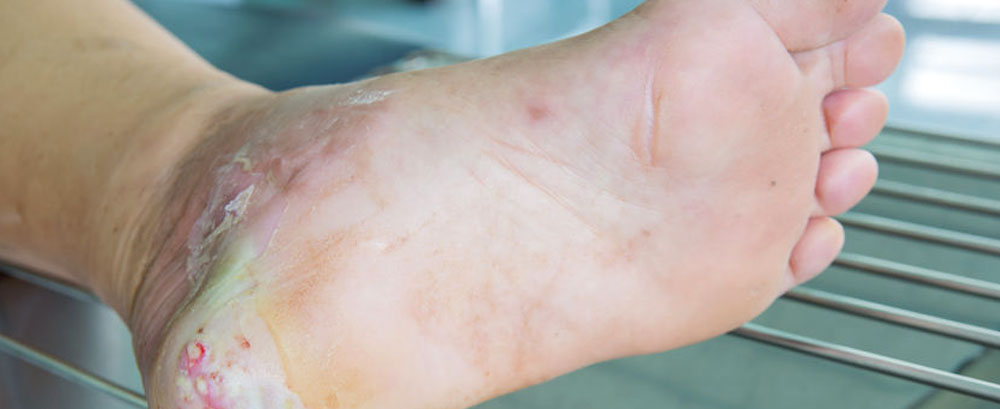Foot problems are among the leading causes of hospitalization for the 16 million people in the United States with diabetes. Hundreds of million of dollars are spent annually on treatment. It has been estimated that 15 percent of all diabetics will develop a serious foot problem at some time in their lives. The most common of these problems are infection, ulceration or gangrene (death of tissue), which can lead, in the most severe cases, to amputation of a toe, foot or leg.
The good news is that most of these conditions can be prevented through regular podiatry visits, patient education, daily foot inspection and care, proper footwear and early recognition and treatment of any suspected trouble areas. The goal of diabetic foot treatment is to decrease the incidence of foot ulcers and amputations.
People with diabetes have changes in their legs and feet, which can result in serious foot problems when they suffer a minor trauma. Because diabetics are at high risk for vascular and neurological complications, such patients are also at high risk for foot complications, which have the potential to lead to amputation. Diabetic neuropathy (nerve damage caused by diabetes) involving the small nerve fibers diminishes the patients ability to feel pain and temperature and results in repeated injury, especially to the feet. Diabetes also causes damage to the small blood vessels in the feet. When the blood flow to the foot is reduced by disease, an ischemic injury may occur where tissue is damaged and eventually dies because of disease. The hallmark sign is pain – pain that is out of proportion with what you can see. This is especially serious in persons with diabetic neuropathy who do not normally feel their feet. With proper care, only a small fraction of these complications progress to the most severe diabetic foot complication – lower extremity amputation.
Once a diabetic has suffered any injury to their feet, extreme care must be taken. A trained professional, podiatrist, orthopedic surgeon or other diabetes specialist must inspect the foot regularly for any additional problems. For example, a cast which treats a broken bone can cause irritation which the diabetic can not feel and result in the development of a diabetic ulcer. With a diabetic with a cast, it is necessary that the cast be well padded and that the cast be changed frequently so that the foot can be inspected. With any injury to the foot, such as sudden pain, drainage, swelling or enlargement of the wound, a person who suffers from diabetes must stay off the foot and be evaluated and treated immediately to avoid further damage.

